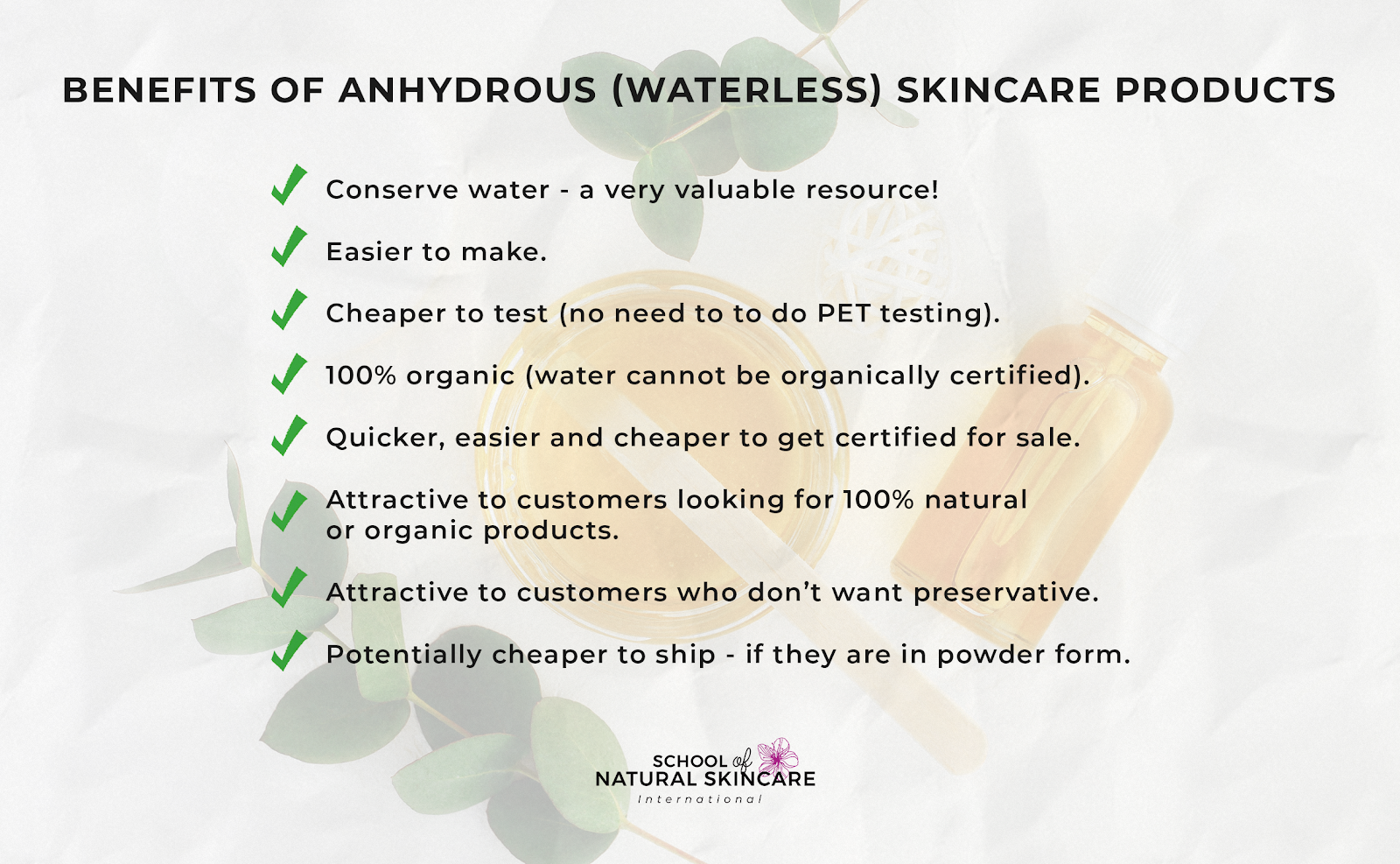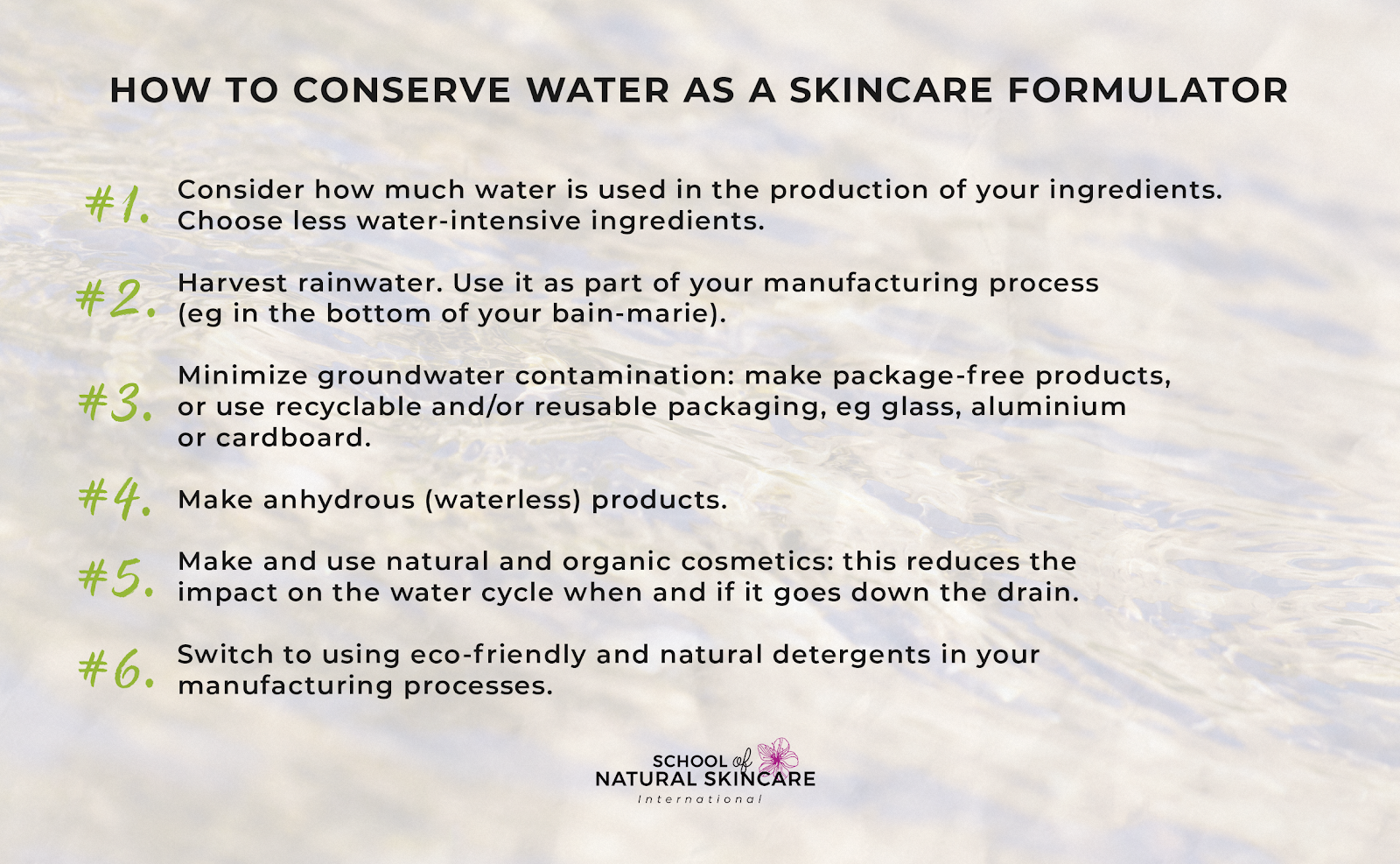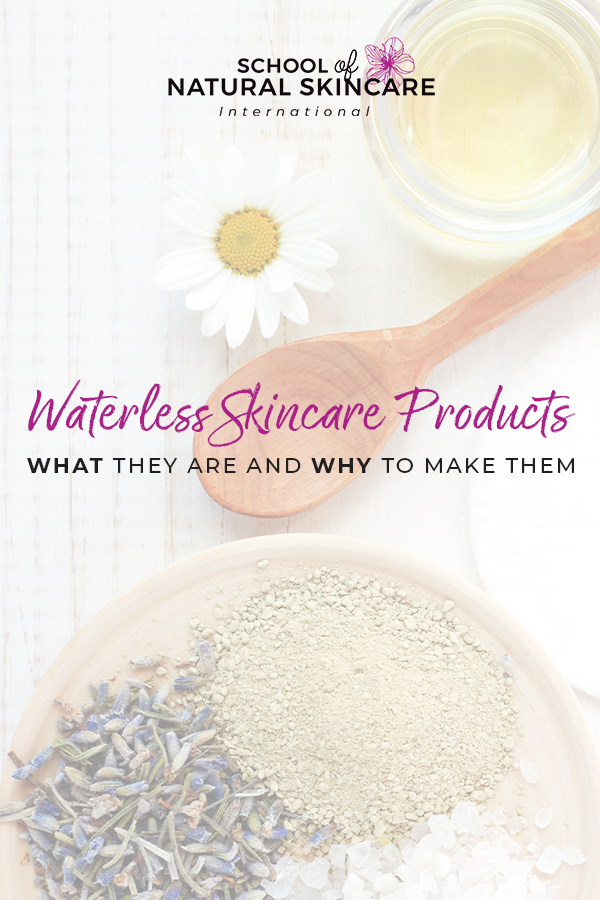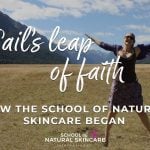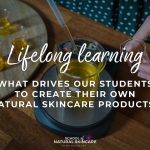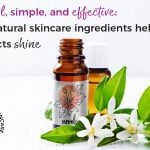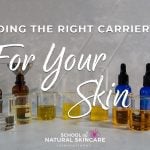Right now, waterless skincare products are trending. But what are waterless skincare products and why should we create and use them? We’re here to give you the lowdown!
Have you ever considered the role of freshwater in beauty products?
Take a look at the beauty aisle next time you’re in a supermarket – thousands and thousands of bottles, all mainly containing… you’ve guessed it, good old freshwater! In fact, most creams and lotions contain 70-80% water!
Individually we might look at the beauty products in our bathroom and think that the quantity of water contained in each one is so tiny it’s basically irrelevant. But scale that up, to all the beauty products in the supermarket, the city, the world – and you can see how quickly that negligible dribble of water suddenly becomes a rushing torrent. All of it high-quality purified freshwater.
Next, some interesting facts:
Did you know…
- Oceans cover around 70% of the Earth’s surface and account for 97% of its water.
- Only 3% of all water on Earth is freshwater.
- Most of this freshwater is locked away in the form of ice caps and glaciers located in the polar regions.
- Only about 1% of all water found on this planet is easily accessible for human use.1
What does that mean for us humans?
It is important to remember that we humans rely on freshwater for our very survival, and with population increasing rapidly worldwide, we’re placing an even greater strain on our finite supply of freshwater – a supply that is basically unchanging!
We humans are not so good when it comes to looking after or using water!
Run-off rainwater pours into our streams, rivers and lakes as well as into underwater ground reserves, and takes with it the various toxic pollutants found on land such as at landfill sites, from industrial waste, or from our agricultural land, ie the herbicides and pesticides that we spray our crops with.
Water that goes down the drain in our homes and places of leisure and work takes with it all manner of waste from food and drink, medicines and drugs, and synthetic detergents and cleaning fluids, as well as cosmetics.
AND, according to the UN we are very inefficient water users! Our water use is growing at more than twice the rate of population.2
All we’ve really mentioned here are the survival needs of humans. What about all the land-based species of animals and plants that rely on freshwater for survival and the species who live in, on and around freshwater? They need it, too!
Clearly there is a lot we need to be thinking about here!
The benefits of waterless skincare products
Well, waterless, or ‘anhydrous’ products don’t contain water – obviously. But there are some benefits of adding anhydrous products to your range, beyond simple water conservation.
If a product is anhydrous (it doesn’t contain water) and it won’t come into contact with water during use, then it can be made without a broad-spectrum preservative. Examples are lip balms or anhydrous body butters made purely with butters, oils and waxes.
Anhydrous products can therefore be:
- Easier to make.
- Cheaper to test because there isn’t the need to to do Preservative Efficacy Testing (PET).
- 100% organic – anything containing water can’t be 100% organic, as water cannot be organically certified.
- Quicker, easier and cheaper to get certified for sale (they don’t require challenge/stability tests).
- Attractive to customers looking for 100% natural or organic products, or products that don’t contain a preservative, or concentrated products containing no cheap fillers (water is considered a filler).
- Potentially cheaper to ship – if they are in powder form, with the customer adding water when in use.
Could waterless skincare products fit in to your brand?
There are loads of different types waterless products – maybe one or more of them would fit well with your brand?
There are anhydrous products that use only oils, butters and waxes, such as luxurious balms, oils and butters, oil-based serums and salves. Cleansing oils and oil-to-milk cleansers can also be anhydrous. These appeal to many consumers as they are rich and concentrated products. We teach students how to formulate a wide range of these in our Diploma in Natural Skincare Formulation.
Anhydrous products can also come in the form of dry powders that are mixed with water by the consumer prior to use. Examples are face masks, cleansers and scrubs such as those covered in our Certificate in Preservative-Free Face mask and Cleanser Formulation.
Then there are atypical products – which would normally be water-based, such as gel-based toners – that some innovative beauty brands have created in powder form, so the consumer adds the water when in use.
Water conservation
If we dive a little deeper into the concept of water-conserving products, we could consider raw ingredients. Some plants are extremely water-intensive to grow, such as almonds. As an example, we can look at almonds grown in California (where about 80% of the world’s almonds are produced). The water footprint of one California almond is 12 liters.3
However… if you make 100% natural or organic products (using almond oil to continue the example), you’re minimising rinse-off chemical waste, which eventually ends up in our water system. Chemical waste then requires removal (as much as possible, varying from country to country), which takes energy. So there’s a lot to consider here!
Our packaging choices also impact water use – both in the water required to make and ship them, plus the contamination of groundwater aquifers by landfill waste leaching through. Another good reason to think carefully about packaging decisions!
Ultimately, waterless products and water conservation is a big topic and we’ve really only introduced it here. We’re carefully considering the role of water in our business, as we strongly believe in business being a force for good – delivering real value, minimising impact on the earth, and continuing to make a profit so we can flourish now, and in the future.
How to conserve water as a skincare formulator
You can do the research to identify the ingredients you want to avoid in your products because of the amount of water required to produce the crop that gives you the ingredient; for example, you might choose not to use almond oil in your products.
You could harvest rainwater and use it as part of your manufacturing process (if you’re a small-scale business), for example by using it in the bottom of your bain-marie, or to cool your products.
You could choose to make package-free products, or use packaging that is recyclable and/or reusable, for example glass, aluminium or cardboard.
You could make anhydrous products.
You could make and use cosmetic products that only contain natural and organic ingredients, because this reduces the impact on the water cycle when and if it goes down the drain, for example body washes, soaps, shampoos, and bath and shower products.
You could switch to using eco-friendly and natural detergents in your manufacturing processes – there are so many highly effective solutions today!
So there are lots of possibilities, and as we said, we’re really only touching on the subject here. There really is a lot to think about!
We don’t need to have all the answers though – we start exactly where we are and step by step we move forward, figuring it out as we go along. Overwhelm is not a helpful place to be – so start small and drop the guilt – it won’t help you in the long run!
Why do we think this subject is important?
Like anything, innovation comes from asking big and powerful questions.
If we’re always seeking answers to how we can become more sustainable, ethical and kind to the planet, we’re challenging ourselves to become resourceful and find ways to make the future a better, brighter and more enjoyable one for our children.
One of the most important things we do each day is to live in the here and now, and create a better future for the planet and everything on it. Humankind is at its best when it is growing, learning, building, developing, changing, adapting and evolving.
We get excited about big questions, real challenges, and solutions that create a brighter, more beautiful, more positive and hope-filled future. Innovations have changed the world we live in today and it is innovation that will make the world a better place.
The question of freshwater conservation is one that needs to be addressed and the cosmetics industry cannot ignore it forever. Where will you start?
Sign up to our free email series: Formulating for the conscious consumer
Join the growing global movement of conscious consumers and learn how to make products that are ethical, sustainable, eco-friendly and innovative as well as in line with the latest trends and developments!
On this training series you’ll learn:
- How to create sustainable skincare products.
- The truth behind common misconceptions. SPOILER ALERT: vegan doesn’t mean natural! Why that matters and what you can do about it.
- The clean skincare trend; what does it actually mean?
- What are waterless skincare products and what are their benefits?
- How a minimalist skincare routine and multipurpose skincare products help people to live more sustainable lifestyles.
Today, consumers, formulators and brands alike are becoming much more aware of environmental and ethical issues. Explore the important issues and discover how to become a conscious formulator creating cosmetics for the conscious consumer!
Love learning about waterless skincare? Save this image below on Pinterest so you can be sure to remember!
1. “Freshwater: what’s at stake, what we’re missing, what … – WWF.” http://wwf.panda.org/our_work/water/importance_value/. Accessed 24 Oct. 2019.
2. “Freshwater Crisis – National Geographic.” 19 Sep. 2019, https://www.nationalgeographic.com/environment/freshwater/freshwater-crisis/. Accessed 24 Oct. 2019.
3. “Water-indexed benefits and impacts of California almonds ….” https://www.sciencedirect.com/science/article/pii/S1470160X17308592. Accessed 24 Oct. 2019.



